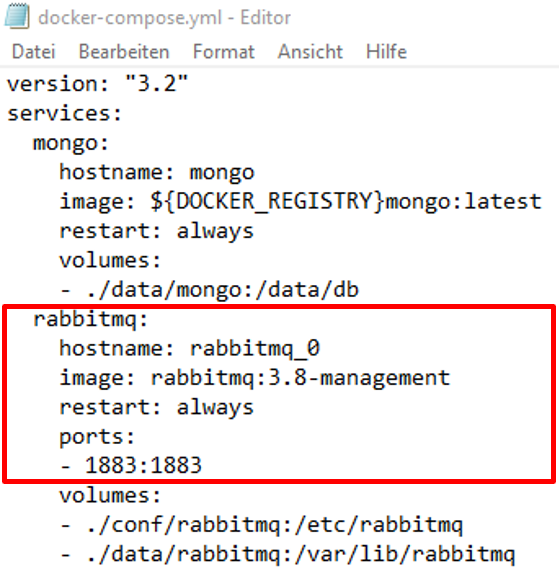How do I connect JUMO variTRON with my SCADA?
Each JUMO variTRON comprises "onboard", an IoT-Gateway for JUMO Cloud and JUMO smartWARE SCADA applications..
Requirement:
Option 1 | Option 2 |
|---|---|
|
|
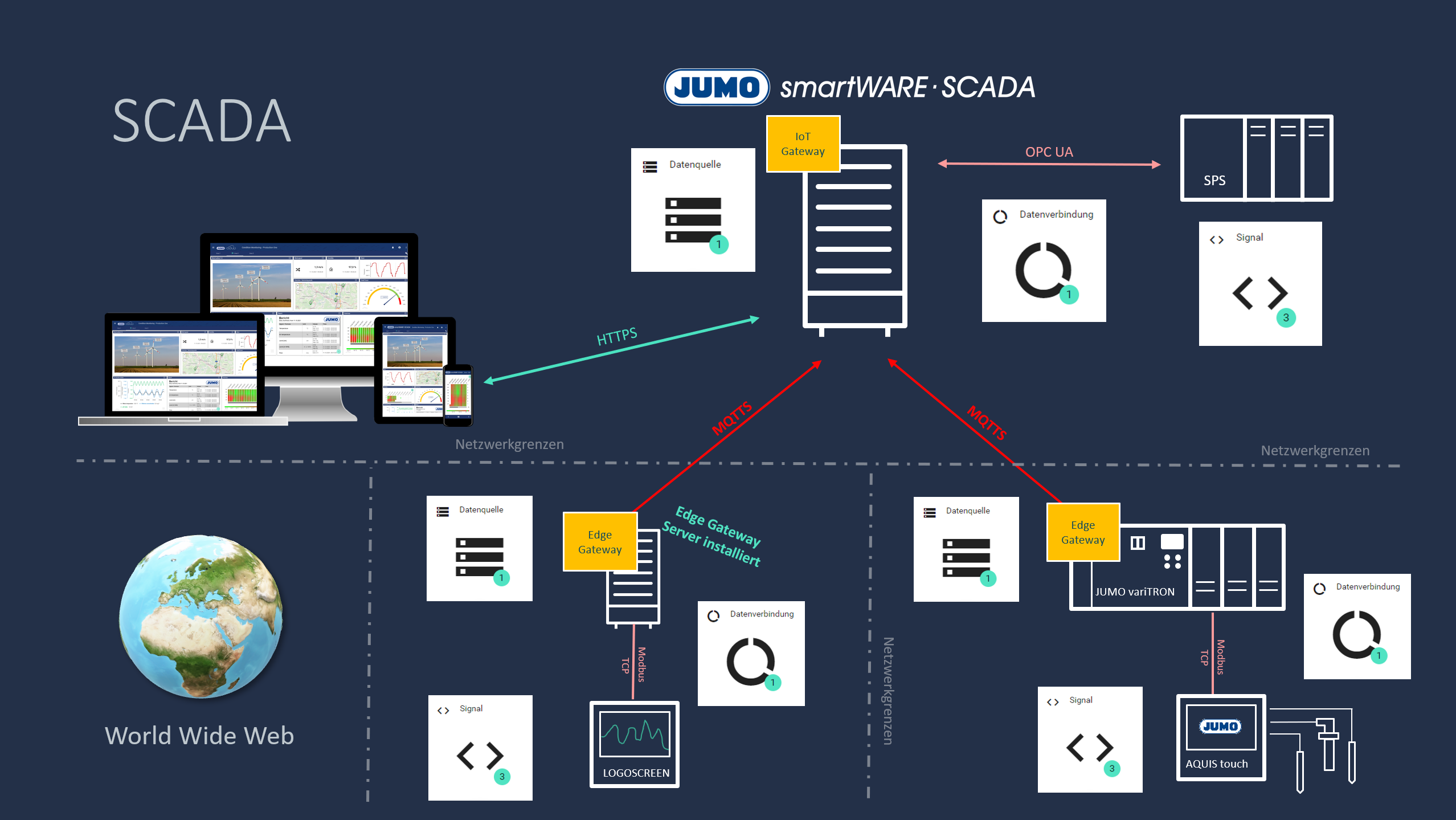
You rather want to watch videos instead, this is just the thing for you.
Find Required Client
Open the configuration of the required SCADA client
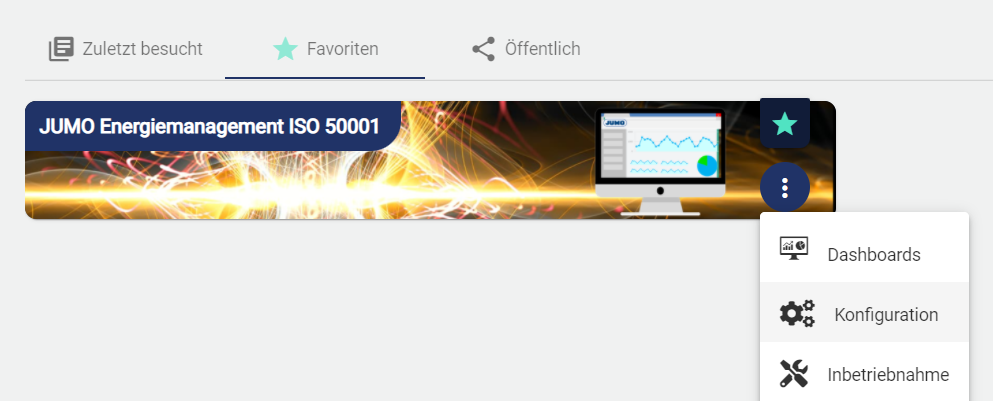
Create Data Source
The prerequisite is a JUMO variTRON device with an Internet connection and a SCADA license which permits the creation of further data sources.
Add a Data Source via the Plus button and open the Basic Configuration.
Assign a name for the Data Source and save it. The device ID and password are generated automatically by the system.

Enable the Cloud Gateway in the JUMO Web Cockpit
The Web Cockpit of the variTRON device is a web server that runs in the device and can be reached via an IP with port 8090.
Under Configuration and Cloud Gateway in the "JUMO Web Cockpit" of the variTRON device, enter the device ID and password from the JUMO smart/WARE SCADA.
Connection to cloud = active
Cloud-Server = Individual
URL for the configurations = URL for the configurations = https://hostname/api/driver/v1/device
e.g. https://jumo-smartware-scada.jumo.net/api/driver/v1/device
URL for MQTT = mqtt://hostname (SCADA)
e.g. mqtt://jumo-smartware-scada.jumo.net
Device-ID = enter Device-ID of the data source configuration
Password = enter password of data source configuration

Here the JUMO variTRON 500 documentation with the explanation of all terms
Create data connection in JUMO smartWARE SCADA
The data connection is required to inform the JUMO Cloud Software Gateway for the JUMO variTRON device which protocol it should use to pick up the signals / values from a specific location. There are three ways of retrieving values or signals in the JUMO variTRON Cloud Gateway. For information: Several of these "data connections" can be configured in one variTRON device.
Modbus TCP (With this data connection, it is very easy and possible to retrieve signals from a device (e.g. Aquis Touch, etc.) and forward them to the Cloud without JUMO Setup / Codesys). To select this data connection, please refer to the chapter data connection). (A Modbus Master is integrated in the Cloud Gateway of the variTRON device). How signals are subsequently created is described in the chapter Signal.
OPC UA (Is described in this chapter. We currently use the OPC UA server of Codesys. (An OPC UA Client is integrated in the Cloud Gateway of the variTRON device)
S7 TCP (PROFINET)
Create Signal
After creating the data source and connection, the Signal is created via the configuration structure as required.
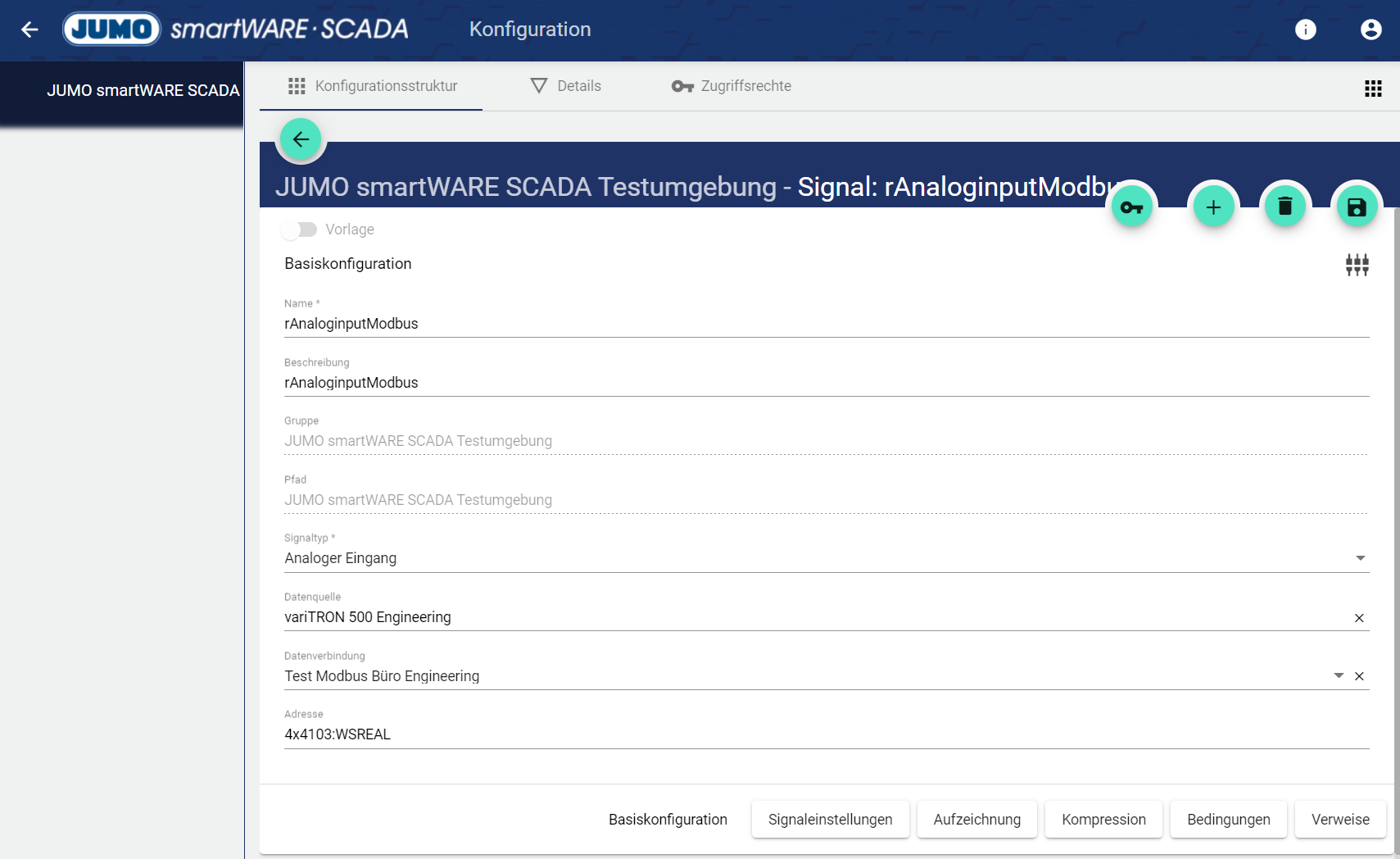
The "Send Configuration" button in the previously created data source must now be selected again and sent:
Create Dashboard
Once again via the configuration structure, select the Dashboard and add another one (see also: Dashboard setup). In the Basic Configuration, assign the name and add as many tabs as you want via the "Panel" area → Save.
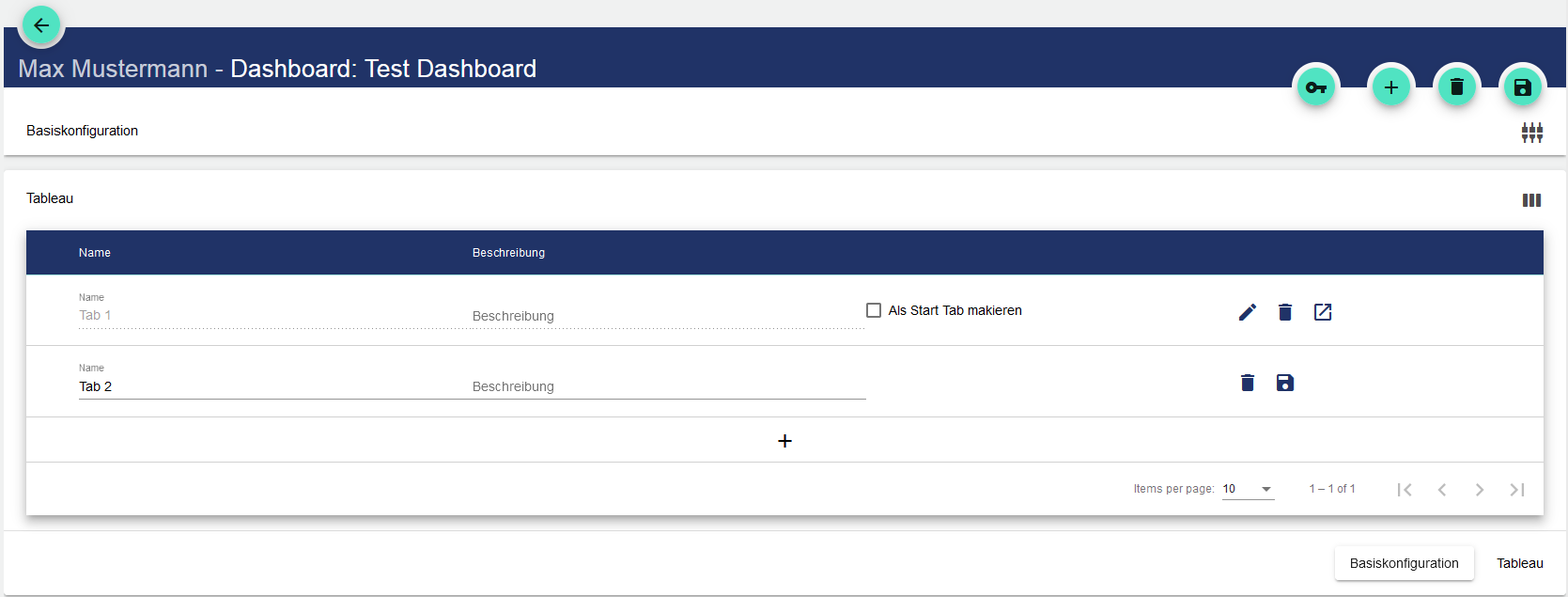
Visualize Signal in the Dashboard
You can access the associated Dashboards via the Client.
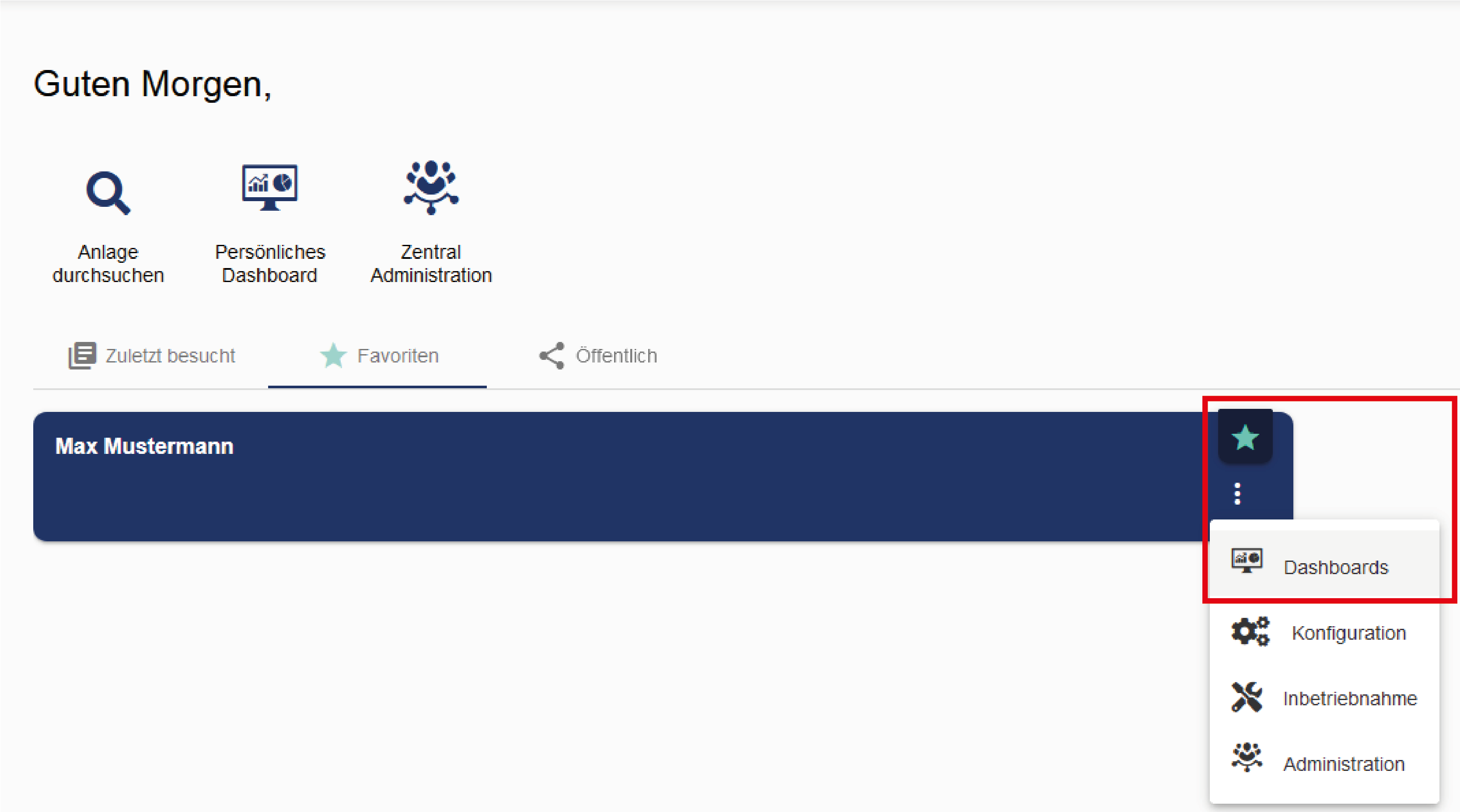
The wrench icon opens a menu that takes you to the Dashboard edit mode.
New widgets can be added, positioned and edited there.

In the edit mode, you can add empty
Widgets using the selection on the left sidebar.
Widgets are variable in position and size. The cogwheel icon is used to configure the widget (e.g.: set up signals etc.).
The editing status must always be saved. The desired values of the variTRON are then displayed in the view mode.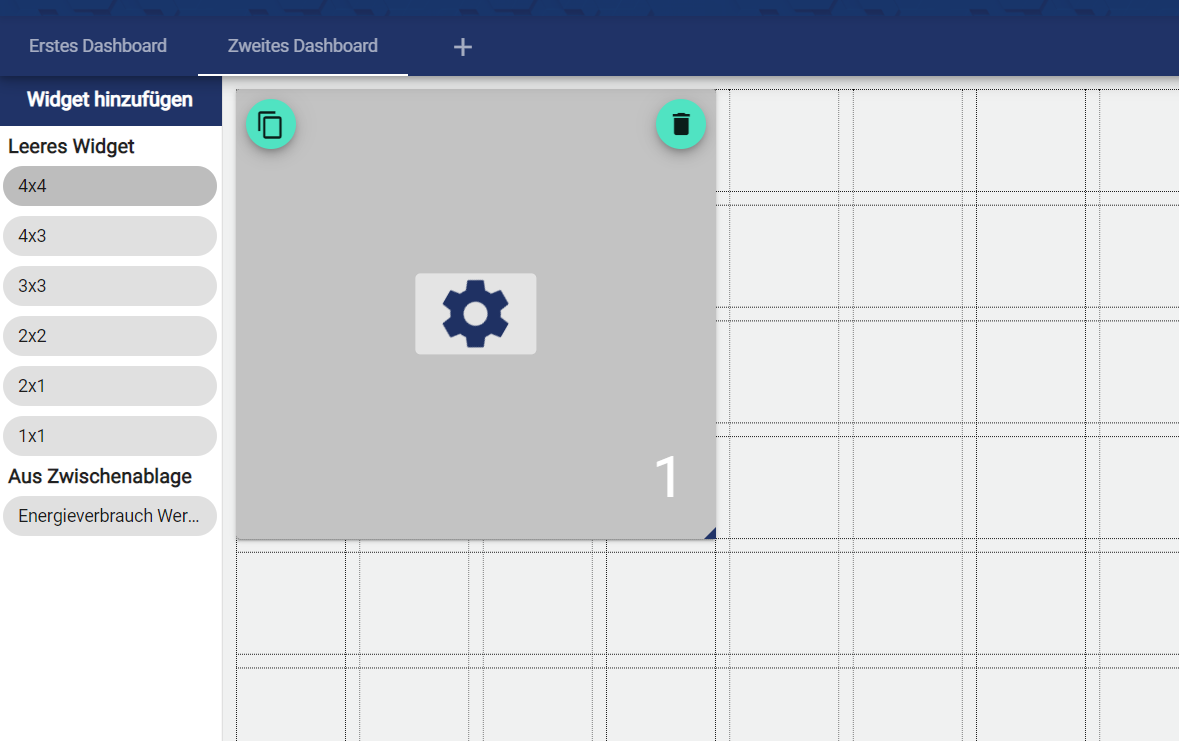
Congratulations! You have transferred your signal to the SCADA.

